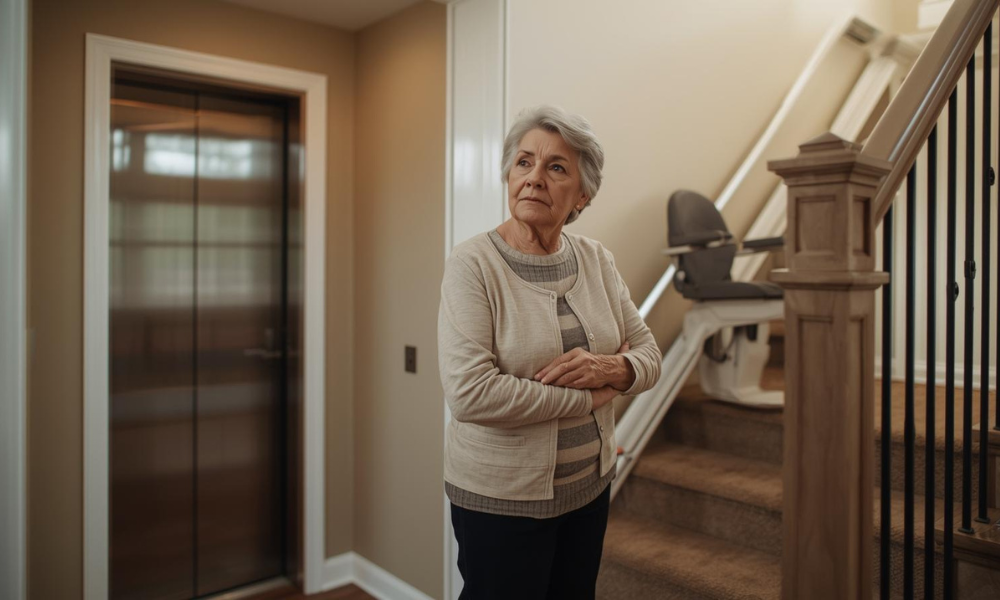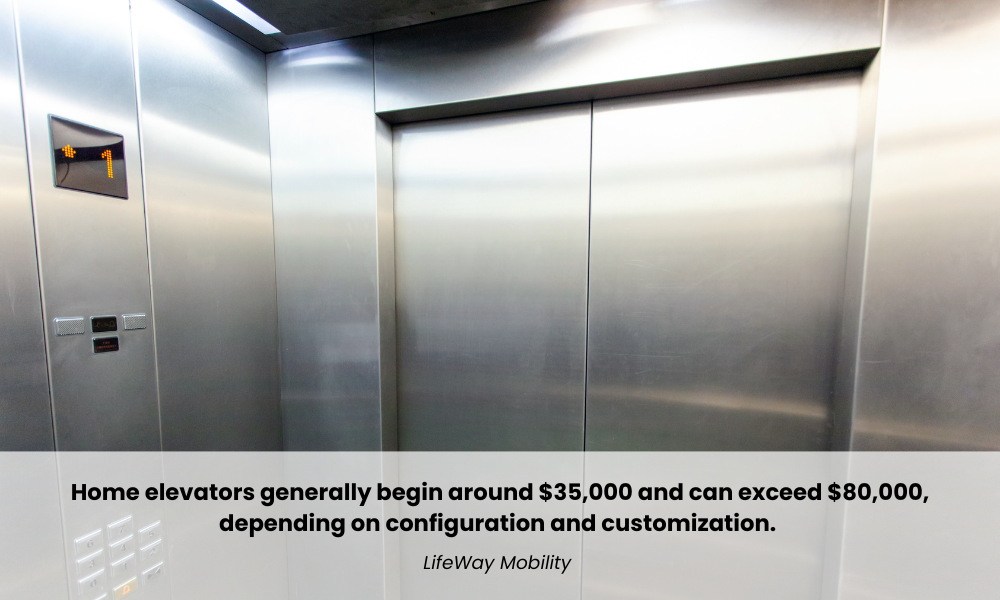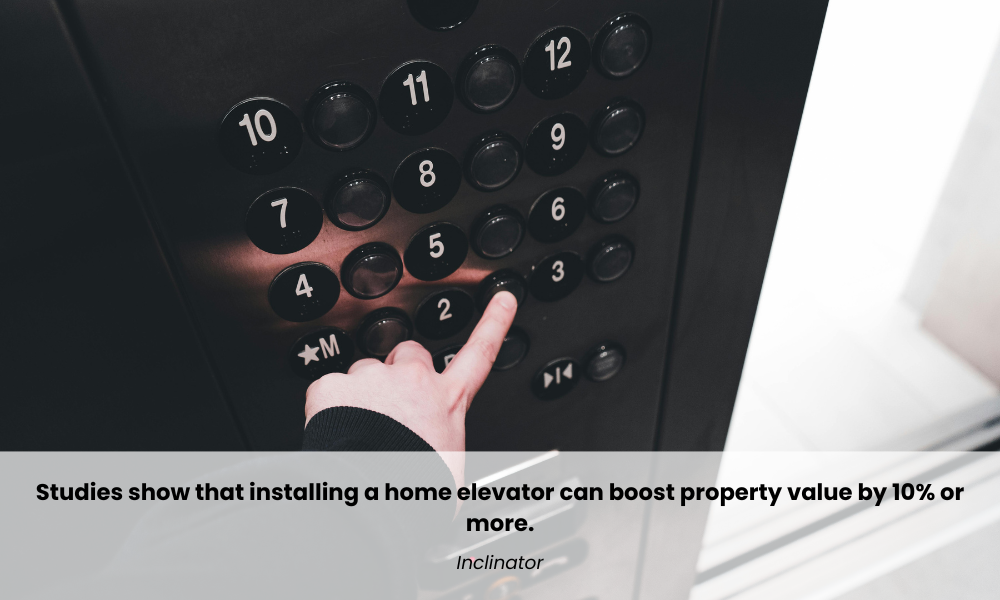
Wheelchair Lifts vs. In-Home Elevators: Which Home Mobility Solution Is Right for You?
October 20, 2025Everybody takes mobility for granted- that is, until it starts to decline. Whether due to age, surgery, or a health condition, when climbing stairs becomes difficult or risky, it can seriously impact your quality of life. One step in providing improved mobility at home is to decide whether you want a wheelchair lift or an in-home elevator. But how do you know which solution is right for your space, needs, and future?
In this blog, we will cover the benefits, problems, and best applications for both wheelchair lifts and in-home elevators.

Understanding Wheelchair Lifts
Wheelchair lifts- also called vertical platform lifts (VPLs)- are designed to lift a person in a wheelchair or power chair up or down a short height. It works fully and reliably for steps or ramps that are not practical anymore. These lifts can be installed either indoors or outdoors, and allow a person to safely handle one or two steps, or could lead to porches, second floors, or basements.
What makes wheelchair lifts appealing is their simplicity. Most models are battery-powered, include key-operated controls, and offer safety gates and under-pan sensors. According to a report by the National Institute on Aging, accessibility solutions like wheelchair lifts play a key role in maintaining safety for older adults at home by minimizing fall risks in high-incidence areas like staircases. When considering how best to begin, a wheelchair lift is often the most straightforward option.
In-Home Elevators for Improving Mobility at Home
Home elevators, in contract to wheelchair lifts, are a total, luxury solution for those wanting multi-level access and planning to stay in the home for a long time. These elevators are built to blend into a home’s existing design and can enhance both lifestyle and property value. For those families and people thinking long term, elevators are a nice and sensible answer.
Modern home elevators not only offer smooth, whisper-quiet operation, but they have become so convenient that they can be operated easily with a remote control. According to Straits Research, manufacturers also focus on quiet operation, customizable aesthetics, and sustainability, developing energy‑efficient systems to meet growing demand from aging households and multigenerational living.
Key Comparison Points
Determining the alternative that best meets your needs between a wheelchair lift and home elevator depends upon what you require for special accommodations. Understanding how each option compares across key factors will clarify which is best for your situation and what role it plays in improving mobility at home.
Space Requirements: Wheelchair lifts require minimal room and are often installed outside or in entryways, making them ideal for tight or unconventional spaces. In contrast, elevators require more planning and space—typically a shaft or corner area within your home.
Cost and Installation: A wheelchair lift can often be installed in a few days at a cost ranging from $8,000 to $12,000. Elevators may take several weeks and range from $20,000 to $50,000+, depending on customization. The greater investment often comes with increased comfort and aesthetic integration, further improving mobility at home in the long term.

When a Wheelchair Lift Is the Better Fit
Wheelchair lifts are a better fit for people who:
- Use wheelchairs, walkers, or power chairs and need reliable access over short distances.
- Have limited installation areas (space for the lift) or cannot afford to make major changes in the home.
- Need a quick, economical answer for dealing with porches, garages, or basement stairways.
These lifts are especially valuable in homes where users want to maintain independence without major home renovations. According to the CDC, one in four Americans aged 65+ falls each year, and fall prevention tools like stair lifts and wheelchair lifts can be life-saving additions to the home environment. For many families, this is the first major step in improving mobility at home.
Why In-Home Elevators Work for Long-Term Accessibility
In-home elevators are often preferred by those looking to make a permanent, future-proof investment in their home. They allow total freedom of movement and definitely lessen the physical effort of going up stairs. With models that accommodate wheelchairs, caregivers, or even multiple passengers, elevators bring both convenience and peace of mind while improving mobility at home across all levels.
They are the perfect solution for accessing multiple floors easily, aging in place, or if the solution is mobility related and will increase the value of the home. Despite the higher upfront cost, elevators eliminate many of the frustrations of traditional stair access and offer a long-term solution for improving mobility at home.
Safety & Compliance Considerations

Safety is paramount when it comes to any of the potential options. Both wheelchair lifts and elevators should be installed to meet ADA standards and follow guidelines from organizations such as the American National Standards Institute (ANSI). These standards ensure your equipment includes necessary features like emergency stop buttons, battery backup, non-skid surfaces, and key-operated controls.
The U.S. Access Board emphasizes these features as critical in residential settings to support those with physical disabilities or mobility impairments. Working with licensed professionals ensures your system is not only compliant but also safe for long-term use, making it a solid part of improving mobility at home.
Why EZ Living Concepts Is the Right Choice
If you’ve identified that either a wheelchair lift or an in-home elevator is right for you, working with a trusted provider can make all the difference. EZ Living Concepts is a family-owned company with over 21 years of experience serving homeowners across Pennsylvania, New Jersey, and Delaware. They have helped more than 3,000 customers improve their home accessibility through ADA-compliant, professionally installed mobility solutions. With factory-trained technicians, no-pressure consultations, and flexible options including rentals and financing, EZ Living ensures that your choice is both safe and perfectly suited to your lifestyle—all while improving mobility at home.
Take Control of Your Home Mobility Today
Your home should be a place of comfort, not risk. Recognizing the need for a wheelchair lift or in-home elevator before an emergency strikes allows you to stay in control of your mobility, independence, and daily comfort. Whether you’re recovering from surgery, managing a chronic condition, or planning to age in place, proactive changes can protect your health, preserve your routines, and increase your peace of mind. Improving mobility at home isn’t just about access—it’s about maintaining your lifestyle without compromise. There’s no better time than now to begin improving mobility at home and safeguarding your independence for years to come.
Contact EZ Living Concepts today to schedule your free consultation and discover the safest path forward.